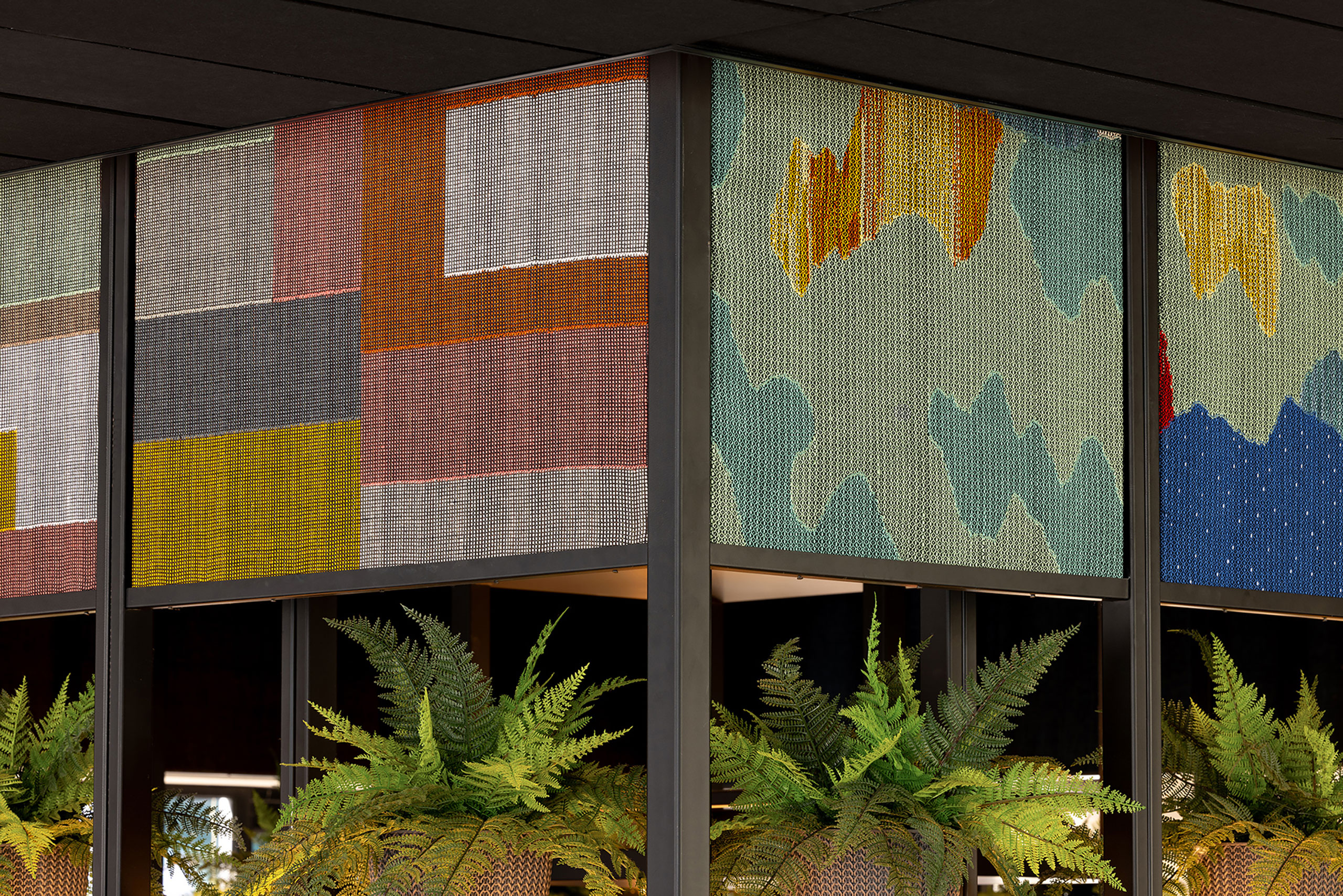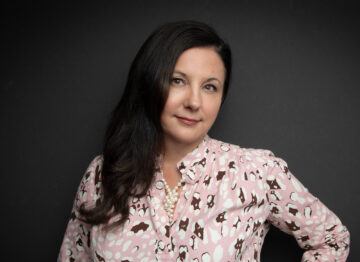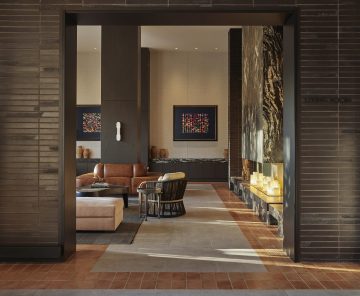A conversation with Gina Deary, Principal at KTGY , Marla Segura, Marketing Manager at White Lodging, & Veronica Volborth, Art Director at KBAA

KBAA: Thank you all for gathering to talk art, design, and hospitality! Let’s start with an overview of Kimpton Santo and the general approach to this project.
Gina: When KTGY looks at art, we don’t see it as separate: ‘This is a piece of art. This is design.’ It goes beyond that. For example, we considered the German school’s architecture part of the artwork. All this beautiful historical stone is very, very soft. It’s crumbling, there’s a lot of imperfection, so we exposed everything in the interior to let that shine. The furniture is clean and simple. We didn’t want anything to compete with it. And then we brought in other materials, like historical tiles, that become art in the space. When we selected artist-made works, we wanted it to convey the lighthearted color of San Antonio—there’s a lot of joy built into the culture. Part of the concept was that artwork, from paintings and sculpture to finishes and fabrics, reflected that joy. We ended up with such a nice mix. There’s a really charming display by Kevin Chupik near the ballrooms. At KTGY, everybody has a background on their computer with projects they’ve liked, and so many people have the background of that artwork. It’s just really, really fun.
KBAA: The historic building has a rich architectural heritage you wanted to honor. How did you go about balancing the original elements while introducing new materials and textures?
Gina: It’s a Bauhaus modernistic architectural experience, so you have a lot of building materials that start outside and extend to the interiors. For example, in the entrance we have these black brick walls that are very clean and simple. We visited an awesome gallery, Ruiz-Healy Art, and discovered ceramic globes by Nicolás Leiva that add so much texture to those brick walls, right? It’s like they’re climbing up the wall.
Veronica: It’s such a unique piece and works so well with the complement of the brick. The ceramic orbs have primal patterns and such exuberant colors. There’s an essence of looking toward this really traditional ceramic craft, but presenting it in a unique and contemporary way that complements the finishes. It ended up just stunning.
Gina: When you walk in, you see a lot of pottery. Even the front desk is shaped like pottery. As we asked questions about the historical crafts that come out of San Antonio, we decided to modernize them. This hotel isn’t really about the past. We want you to walk off the street and know you’re in San Antonio, but you’re in a new San Antonio. So we went out and mined all the finishes, conceptually. The hotel is built out of the local materials, but it’s new and different. Curiosity definitely played a role in that.
Marla: The art and the architecture tell a story together. Walking into Dean’s Steakhouse, for instance, there’s this beautiful exposed brick, original stone and beams with the textile installation overhead. They provide context both ways.
Veronica: I also think the way Doerte Weber designed and created her fiber works for the lobby bar—with four panels depicting San Antonio’s culture corresponding to each cardinal direction—really piques visitors’ curiosity.
Gina: That actually involved really in-depth detail work with the craftspeople who were making the framework. There were these intense measurements and adjustments she had to make, but she was always down to learn and figure it out.
KBAA: What advice do you all have for somebody looking to launch a project with KBAA?
Veronica: My advice is to think about the story waiting to be told. What makes the property unlike any other place in the world? In the case of Kimpton Santo, it was the unique blending of culture, craft, and the history of San Antonio. I’d also suggest approaching the curation with a desire to collaborate. The magic happens when we can partner, become a team, and build something truly singular together.
Marla: Veronica read my mind. In a way, it makes my job more exciting and a little easier. It becomes a huge part of the identity of the hotel. People love the little Easter eggs… “Did you notice every panel on the bar is different? Did you notice the patterns on the globes?” It’s fun for guests and for patrons and for people that work here to learn more and discover. How it ties into the history is just an added bonus. It’s really exciting!
Gina: There are so many different ways of looking at it. You can think of them as advisors or curators with an extensive knowledge bank. I can say to them, “a lot of our concept has to do with weaving things together. I really want to get a weaver in there, somehow.” But I would have never been able to find our artist Doerte Weber. I might have ended up with a little weaving I found or just kept doing weaving artwork, but with KBAA we ended up with this showstopper. Or I can give them a specific piece, and they’ll come back with a package of ideas, all different mediums and price ranges. It opens up so many different opportunities. And then you’re also getting all these experts. We all lose track of how hard it is to frame things, to store and move art, to keep it safe, to hang it. None of that stuff is fun! And they take care of it all.
KBAA: Thank you again for sharing your perspectives! As we wrap up, what role does collaboration play in creating truly exceptional spaces?
Gina: Through my years of experience, if one person holds all the vision, it can become very flat. No matter how good of a designer you are, if you’re following your vision to the tee, suddenly there’s no room for surprise. What I’ve found is that if you let the artists do what they do best, they’re going to visualize the concept and see the space differently than you are, so the art becomes more meaningful and tells more of a story.
Veronica: Gina was such a cheerleader for the artists, supporting and giving them so much creative freedom throughout the process. Being able to step back, look at all the range of ideas, and realize “the best ideas don’t always have to be mine”—the collection and the design ends up more powerful that way. In the end, supporting the artists and artisans to really create their vision and incorporate it into the space—that’s something KBAA prioritizes.


